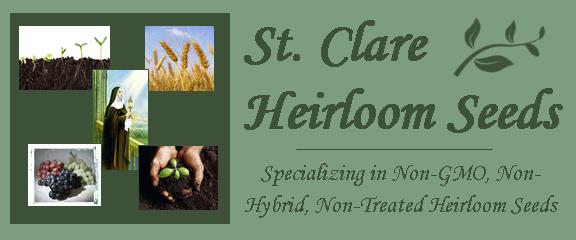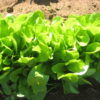Description
Small Red Bean
50 Seeds per pack
Days to Maturity: 75–95 days
Sun Requirements: Full Sun
Botanical Name: Phaseolus vulgaris
A lesser-known heirloom prized in California since 1855, the Small Red Bean is valued for its rich color, creamy texture, and ability to hold its shape through long cooking. This compact, semi-bush variety grows to about 14″ tall with early runners and medium-green pods, each holding 4–6 small, plump beans. The seeds measure about ½″ long, with a deep brick-red hue and an oval form slightly rounder than kidney beans.
Easy to grow and reliably abundant, Small Red Beans flourish in home and market gardens. Their excellent baking qualities make them a favorite for soups, chili, and baked dishes, as they retain their flavor and texture without becoming soggy or falling apart.
Nutritious as well as flavorful, these beans are naturally high in plant-based protein, fiber, and essential minerals, offering a wholesome addition to any pantry. When fully cooked, they develop a smooth, creamy consistency and mild flavor that blends beautifully with other ingredients.
A true culinary gem, Small Red Beans offer dependable yields and are as attractive as they are delicious!
Planting Instructions for Small Red Bean Seeds
When to Plant
Sow Small Red bean seeds outdoors once the danger of frost has passed and the soil has warmed to at least 60°F, ideally 70–80°F for best germination. This is typically 1–2 weeks after your average last frost date. Beans are frost-sensitive and should never be planted in cold, wet soil.
Where to Plant
Choose a site with full sun and well-drained soil. Avoid low or compacted areas where water tends to collect. A soil pH between 6.0 and 6.8 is ideal. Small Red beans prefer warm, sunny weather and will benefit from compost-enriched soil. If your soil is poor, amend it before planting.
How to Plant
Do not soak bean seeds before planting, as this can reduce germination rates. Sow seeds directly outdoors about 1″ deep in well-warmed soil. Space seeds 2–4″ apart in rows that are 18–24″ apart. If starting seeds indoors, plant them 1–1.5″ deep in pots and harden them off before transplanting. Use your finger or a dibber to make the holes, and cover the seeds lightly with soil.
Growing Notes
Small Red Beans are a compact semi-bush variety, reaching about 14″ tall with early runners. Medium-green pods typically hold 4–6 small, plump beans measuring about ½″ long, with a deep brick-red hue. They adapt well to a range of climates and are reliably abundant. Like other beans, they fix their own nitrogen and rarely need additional fertilizer. Keep soil moist but not soggy, especially during flowering and pod development. Mulch when plants are established to suppress weeds, retain moisture, and prevent soil splash.
Succession Planting
Small Red Beans are typically grown for dry use and produce one main crop all at once. Staggered planting is generally not necessary unless growing for fresh eating early in the season.
Pests and Problems
Watch for Mexican bean beetles, stink bugs, leafminers, spider mites, and common fungal and bacterial diseases. Remove affected leaves promptly and practice 3-year crop rotation. Avoid handling wet foliage to reduce disease spread.
Harvesting
Harvest beans for dry use when pods are tan and brittle and beans inside rattle, typically around 75–95 days from planting.
- Option 1: Uproot the entire plant once 90% of the leaves have dropped. Hang to dry in a sheltered, well-ventilated area.
- Option 2: If conditions are humid, pick pods as they dry and finish drying them indoors.
Shell beans by hand, stomping dried pods in a sack, or dancing on them in a tub. Winnow with wind or a fan to separate beans from chaff. Beans must be hard and fully dry before storing.
Storage
Store fully dried beans in airtight glass jars or sealed containers in a cool, dark place. For long-term storage (5–10 years), use mylar bags or #10 cans with oxygen absorbers. Beans should not be soft or dentable with a fingernail.
Cooking Tips
Small Red Beans are excellent for soups, chili, and baked dishes. They have a smooth, creamy consistency and mild flavor when fully cooked, holding their shape without becoming soggy. Like most dry beans, they benefit from overnight soaking followed by a 10-minute boil and a slow simmer until tender. Cooked beans freeze well with some cooking liquid in jars or containers.
Seed Saving
Save the best, fully mature beans for next year’s planting. Choose pods that are dry, brittle, and tan in color. Shell the beans and check that they are hard and cannot be dented with a fingernail. Spread the seeds out on a screen or tray in a warm, dry, and well-ventilated space for an additional week or two to ensure they are completely dry. Once fully dry, store them in airtight containers such as seed saving envelopes or glass jars in a cool, dry, and dark place. Properly dried and stored seeds can remain viable for 3–5 years.
FAQ:
What are Small Red Beans?
Small Red Beans are a classic dry bean variety known for their deep red color, firm texture, and mild flavor that holds up well in cooking. Popular in chili, soups, and baked bean recipes, they’re valued for both their taste and their ability to keep their shape after long simmering.
How long do Small Red Beans take to mature?
Small Red Beans reach maturity in 75–95 days from planting, depending on growing conditions.
When is the best time to plant Small Red Bean seeds?
Plant after all danger of frost has passed, when soil temperatures are at least 60°F (ideally 70–80°F). This is usually 1–2 weeks after your last average frost date.
How do I plant Small Red Beans?
Sow seeds 1″ deep and 2–4″ apart in rows spaced 18–24″ apart. Plant directly in warm, well-drained soil in full sun. Do not soak seeds before planting, as it can reduce germination.
Do Small Red Beans need support or trellising?
They are a compact semi-bush type with early runners. While they generally don’t require trellising, light support can help improve airflow and yield.
How do I know when Small Red Beans are ready to harvest?
For dry beans, harvest when pods turn tan and brittle and beans inside rattle—usually at 75–95 days. Pick pods or pull the whole plant and dry in a well-ventilated area.
How should I store dried Small Red Beans for food use?
Once fully dried, store Small Red Beans in airtight containers in a cool, dark place to preserve their flavor and texture. For long-term food storage, use mylar bags or #10 cans with oxygen absorbers. Properly stored beans can remain safe and delicious for 5–10 years.
What do Small Red Beans taste like?
They have a smooth, creamy texture and a mild flavor that blends beautifully in soups, chili, and baked dishes. They hold their shape well without becoming mushy.
Can I save seeds from Small Red Beans for next year?
Yes—choose fully mature, dry pods, shell the beans, and ensure they are completely dry before storing in airtight containers. Seeds can remain viable for 3–5 years when stored properly.

















Gail H. (verified owner) –
I just planted them 3 days ago. I love the packaging with the little plastic bag.
Gregory D. (verified owner) –
These beans grew great. Grew enough to can for chilli and save for next years seeds.
Adam Nolin (verified owner) –
Prolific harvest